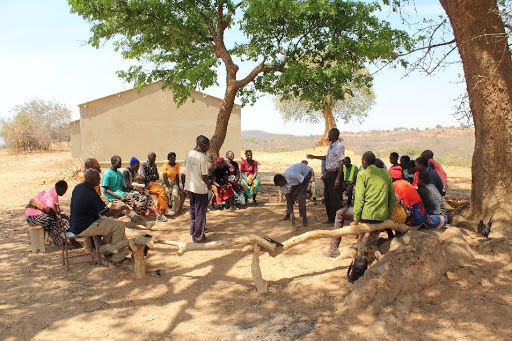We started off the day with a quick breakfast of samp (chopped corn) before driving out to Cheeba. It takes us about 45 minutes to get into Cheeba each day on a very rough road. Topher spent the majority of the day conducting household surveys which we use to understand the local economy, demography, technology, and infrastructure. By connecting with the community we ensure that our partners operate sustainably and take ownership of each of our projects.

The installation of the main components of the energy kiosk continued, with the contractor Sun Ray getting the interior wired and grounded. The kiosk actually has two rooms inside. The one in the photo below will have the freezers and sewing machines, the room next door will house the kiosk batteries and other components. The women’s group plans on adding a small barbershop in the future. Taylor, an electrical engineer and KWH volunteer, spent the day working with Sun Ray to make sure the system was wired per our specifications.


In Cheeba, there is one spot we get cell phone service, and it is marked by a stick in the ground. We lovingly call it “The Stick of Communication.” Approaching the Stick you get nothing. Once you reach it, Boom! Service! Every time we want to communicate with someone outside of town, consult the internet for solutions, or test the data acquisition system, we have to make the trek out to the stick. Sometimes it’s a nice break from the work; other times it’s a big hassle. Some times you see a lot of cows.
Meanwhile, Kirk and Rafael traveled to the community of Kanchomba (about four hours away).
Kanchomba is another community that Caritas Monze has been deeply involved with, and is a potential site for an energy kiosk program next year. It is important for us to understand what the community needs most, and how electricity access could benefit them. We met with a youth group (in Zambia, a “youth” is anyone roughly under the age of 35).

It’s clear that Kanchomba is suffering dearly from the drought in Zambia. They worry about food security, and see that solar power could be used to pump water for their community garden making them less vulnerable to future droughts. Keep following KiloWatts for Humanity to see how this project unfolds!
We wrapped up the day with a tour of the headman’s house, which utilizes a solar water pump to irrigate using drip hoses and flooding. Big shout out to Ngongue and Clement from Caritas Monze who helped translate our surveys to Tonga--and for teaching us too. Muchale kabotu (stay well)!




Comments